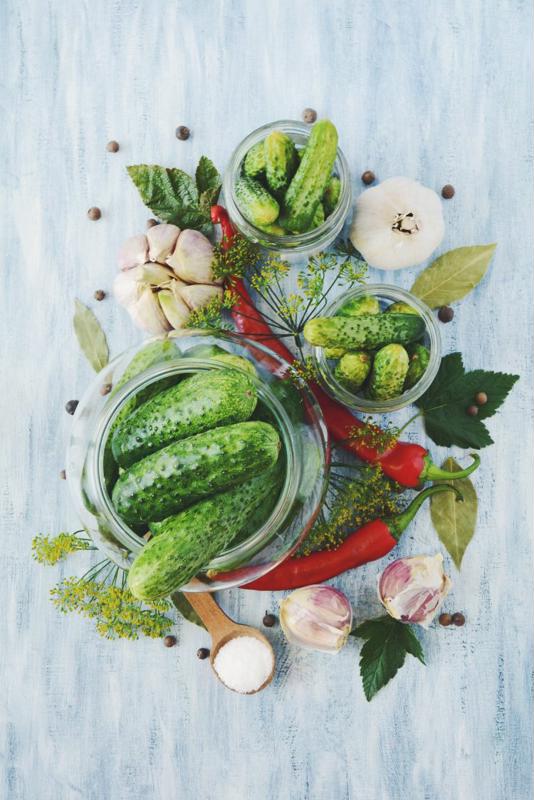A new food trend is popping up in stores, restaurants and home kitchens: pickles, and not of the common cucumber variety. Picked fruits and vegetables of all kinds can be pleasing additions to a dish.
For culinary students in Boulder, it can be fun and informative to learn about locally grown foods they can pickle, as well as more exotic options to toss into the brine.
Pickled avocado
Every chef, professional or otherwise, has lamented the short window of opportunity for using an avocado. Looking for a way to extend the shelf life of this creamy fruit?
First, bring water, vinegar, honey and salt to a boil. Once the salt has dissolved, remove from heat and let cool.
Cut ½-inch slices of avocado, divvy them up among some glass jars and add a sprig of rosemary, whole peppercorns, crushed red pepper and peeled cloves of garlic to each, California Avocados suggested. Then, cover them in the cooled brine.
Use your pickled avocados however you normally use the raw variety for, like toppings, sandwiches and dips.
 Pickled garlic and fennel can add unique flavors to your dishes.
Pickled garlic and fennel can add unique flavors to your dishes.Pickled garlic
You can never have too much garlic. Raw, fried, roasted – no matter how you prepare this small but powerful root vegetable, it can add a distinctly delicious flavor, though different notes are brought out with various preparation methods. Pickling garlic can add yet another unique garlicky tone. Try this pickled garlic recipe from HGTV.
The brine is the first step: boil water, vinegar, sugar, salt and whole peppercorns, then remove from heat once salt and sugar have dissolved.
Peel cloves of garlic and fill a glass jar with them. Then, pour the brine over top and process the jars in a boiling water bath. Add pickled garlic to a tray of hors d’oeuvres, a salad or simply eat plain by the clove.
Pickled fennel and orange
With its wispy leaves and licorice-like flavor, fennel is an interesting flavor to work with and one of Italy’s favorite vegetables, according to CookingLight. Every part of the plant, from bulb to stalk to leaves, is edible, and therefore pickle-able. Try out Serious Eats’ rendition of pickled fennel and orange:
First, slice the fennel as thin as you can. Use a mandolin if you have one. Toss in salt and let sit. This stage helps add a good crunch. After an hour, squeeze out the excess liquid produced during the resting stage, then toss the fennel into jars along with thinly sliced oranges and ground black pepper.
Top off with apple cider vinegar, making sure the liquid completely submerges all leaves and fruit. Refrigerate and wait at least 24 to 48 hours before eating.
Pickled sugar pumpkin
Pumpkin is good for more than spiced lattes and pies; this sweet seasonal flavor packs quite a punch when prepared right. This pickled sugar pumpkin recipe from Serious Eats is a unique and delicious way to enjoy this squash. Add cubes to your next cheese plate or dessert line-up.
Bring water, vinegar and sugar to a boil until the sugar dissolves. Then, add cubed sugar pumpkin and a tied-up cheesecloth bundle filled with peppercorns, cloves, allspice berries, crushed cinnamon sticks and a bay leaf. Continue to cook for 30 to 40 minutes, or until the pumpkin pieces are soft.
Ladle the pumpkin into jars that have been processed in a boiling water bath and thoroughly cover with the brine. Seal the jars and process again in a boiling water bath. Wait two weeks before digging in.
Pickling fruits and vegetables is an age-old method of preserving food to keep it fresh in and out of season. Bring back this ancient form of food preparation in a creative way by experimenting with a variety of produce.

